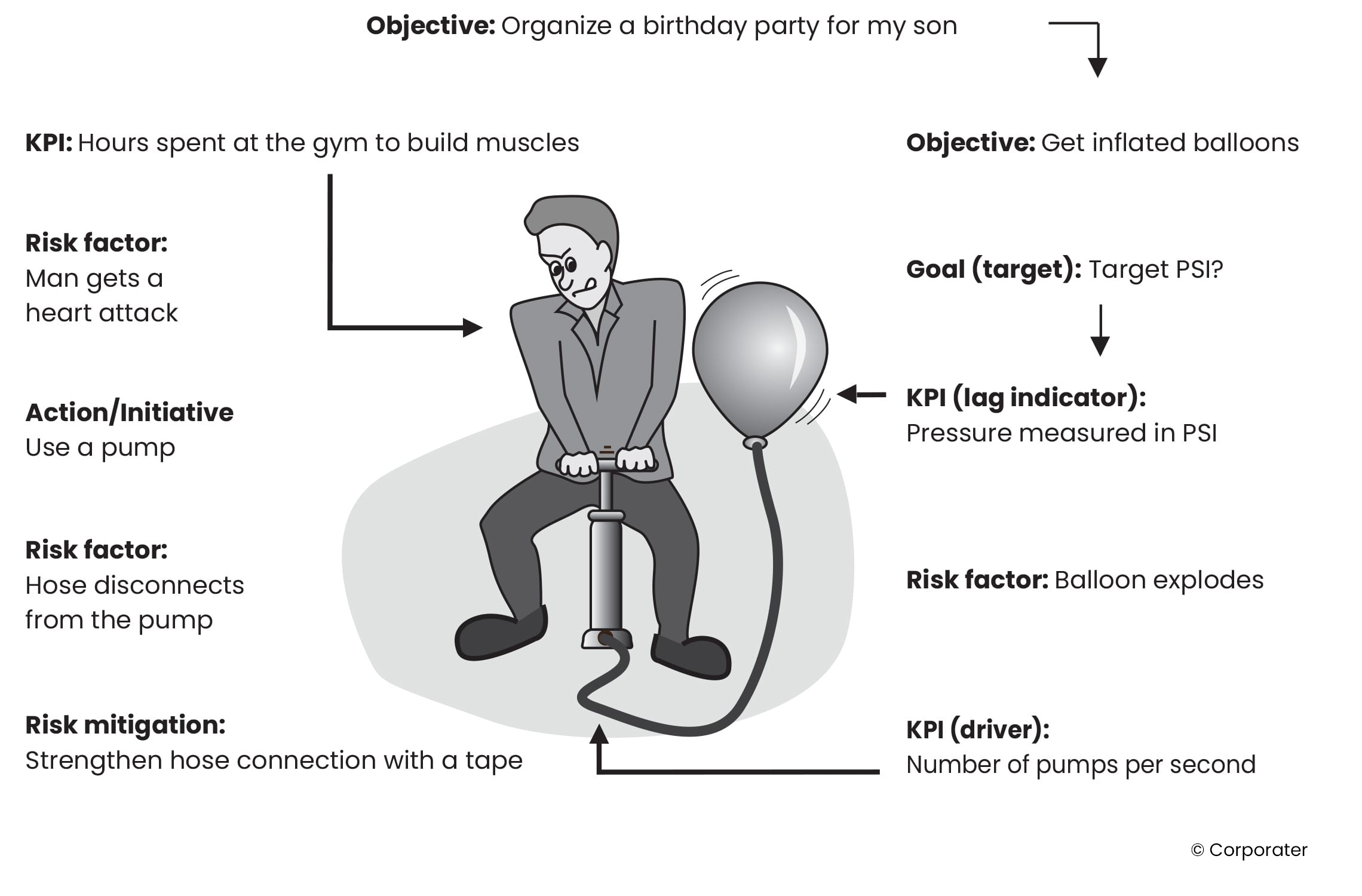What is a digital twin, and why do you need it?
In this age of digital jargon, a term that is often mentioned is “digital twin.” Ever wondered what it means?
A digital twin, in most scenarios, refers to creating a digital version of something in the physical world. For example, consider a machine – creating a digital twin of a machine would entail building a virtual overlay of the machine which has the specifications of the machine, the mechanical drawings, information about its performance, maintenance, cost history, and more – all of these made available as a digital layer and typically explored using VR glasses. Thus, you connect the physical world with the world of digital data in a digital twin.
There could be many forms of digital twins – a variety of them are created for oil platforms, reservoirs, material things like automobiles, or even for humans. But did you know that organizations and businesses can also have digital twins?
A digital twin of an organization (DTO) extends the concept of a digital twin to be a virtual representation of a physical product, process, or entity. A DTO mirrors the organization’s structures, interconnects departments, and provides a complete virtual overview of the business. It is essentially a digital map that describes the organization and connects people, data, assets, processes, etc. using technology. Most businesses are full of functional silos where each operates independently of the other functions. A digital twin of an organization is useful in managing operations efficiently and working in a unified experience without the silos that regularly exist within teams, departments, business units, facilities, and/or regions. Creating a digital twin helps align strategic goals, drive business performance, identify risk and opportunities, and improve processes related to anything in the business.
DTO: An imperative for business success in the future
In today’s business environment, change is continuous and happens at a fast pace. Still, the business dynamics of today are not the business dynamics of tomorrow. During the industrial revolution and even up until the start of the millennium, one could optimize and fine-tune a business over time as it had more stable operating conditions. In this light, measurement was key, and one can never forget the great management thinker Peter F. Drucker’s famous words:
“You can’t manage what you can’t measure.”
Measuring is a very scientific approach to business performance. But this was probably a good approach for stable business environments where agility was not a part of regular action. After having observed the changing environments over the past two decades, I see that ‘measurement’ is not the key challenge for businesses in most industries. Instead, a highly relevant factor these days is the ‘speed’ of response and adaptation to change, innovation, M&A, globalization, and shifting business dynamics and environments. Some of the largest and the most valuable business organizations in the world today were born in the last 10-20 years. While some of the twentieth century’s largest organizations have “faded away” despite having successfully established themselves and reaching a phase of stable operations.
There are several reasons for this. Yet, what characterizes fast-paced and high-growth business organizations are that they are –
- Vision-driven
- Agile and fast movers
- Able to detect even minor changes to and (often) define their business environment
- Quick to react and realize the opportunities before others do
- Can easily work cross-functionally – not limited to silos; and
- Have an overview of how things are working and the business dynamics both internally and externally
It is remarkable to realize that most of these characteristics are achievable by creating a digital twin of an organization. With a digital twin, you can describe/document the organization’s management and system, how the silos are connected, and how business dynamics work both internally and externally. The digital twin is the digital map of how your organization is weaved together.
Fundamentals for creating a DTO
One may wonder where a digital twin starts and ends? The answer to this depends on what kind of a twin you are describing. Gartner defines a digital twin of an organization as: “A digital twin of the organization is a dynamic software model of any organization that relies on operational and/or other data to understand how an organization operationalizes its business model, connects with its current state, responds to changes, deploys resources and delivers expected customer value.”[i]
“Operationalizes its business model” – this is the key phrase here. This simply translates to taking a company’s strategy and decoding the strategy and the strategic choices made, into a tactical and operational plan. How does one do that?
Try a new keyword. “Describe.”
The digital twin of your organization is a digital representation of how your business is described. You need to describe the business strategy and how it affects the tactical and operational levels for all functional business domains in the organization. You need to tell the business story and how it interlinks with the various business domains. It is moving from “you can’t manage what you can’t measure” to (transition your company into) “you can’t manage what you can’t describe.”
The first step toward describing your management system (strategic, tactical, and operational levels) is to have a vocabulary or a taxonomy. Every business should have a taxonomy they are familiar with. One must use their own taxonomy/words so that it creates a common way to describe your management system.
Let me illustrate the use of taxonomy in a simple family scenario –
Imagine your (strategic/personal) objective is to organize a great birthday party for your son. You would start by thinking about ways to make it fun. You decide to use balloons and buy some. The first thing you would do to use the balloons is to inflate them. That is now your new objective. You start by blowing air with your mouth, but soon start feeling dizzy due to hyperventilation (unforeseen trouble – risk). You decide to take a break, which puts you slightly behind schedule. As you rest, you realize that if you purchase an electric pump (investment), you could speed up your process. And so, you purchase a pump (business decision) and get to work. You may also decide on the target pressure to make sure that the balloons are ready in time for the party. For this, you may set a goal (target) and measure what is the status (pressure measured in PSI).

Even a simple task like using a pump can be a tough job for an untrained person. If you’ve put in hours at the gym (to build strong muscles) it could indicate that you can pump with a higher intensity (pump per second – leading indicator).
As you are filling up the balloons with air, one after another, various risk scenarios also emerge in your head. What if the pump’s hose suddenly starts leaking air (risk)? What if the entire pump suddenly breaks (risk)? What if you put too much air into the balloon causing the balloon to explode (risk)? What if this heavy exercise makes me fall over with a heart attack (risk)? There are so many risk factors that you need to take care of. All of these are plausible risk scenarios, which, if realized, could prevent you from meeting your objective. Maybe you might strengthen the hose connection with some extra tape (risk mitigation).
Such a real-life description of a personal objective can also be applied to a business. There are technology solutions that specifically aid in building a digital twin of the organization with precise capabilities to support the three fundamental elements of creating a digital twin.
- Describe/define your management system: Establish roles, responsibilities, governance structures, strategy, projects/ portfolio, processes, legal requirements, best practices, decision matrix, etc.
- Mirror your organizational structure: Map out your teams, entities, departments, business units, regions, etc. Allow users to add a business unit or modify a process.
- Map out your business processes and workflows: From simple to complex processes, allow users to automate system governance through a rule-based approach. As conditions are triggered, the system will run automatic tasks which include notifications, creating objects, and more.

Digital transformation – Is cyber threat really the greatest risk of all?
The difference between enterprise architecture and a DTO
Many may ask: “How is this different from Enterprise Architecture (EA)?” “Isn’t this just the same old thing in a new wrapping?” To answer this, let’s look at a simple explanation of what enterprise architecture is. According to Wikipedia: “Enterprise architecture (EA) serves to capture the relationships and interactions between domain elements as described by their processes, functions, applications, events, data, and employed technologies.”[ii]
In my experience, enterprise architecture is used in IT departments to document (map) how systems, capabilities, people, processes, etc. are woven together. It does not take the strategical, tactical, and operational levels with day-to-day business dynamics (including unforeseen changes, and risks) into account. Most projects I have seen stop with EA being a documentation tool. It serves as a good map for IT departments, but to enhance business operations and to effect better outcomes one needs to go beyond documentation and focus on a broader part of the business.
With a DTO, on the other hand, business users can involve directly to digitally represent the business and interconnect and cover the whole business domain. DTO goes beyond “documentation” by adding the practical dimensions of data, insights, planning, and execution. Creating a DTO with its extended dimensions connects the “map” or “documentation” with the real-world dynamics and provides the right “ingredients” for business success, making it far more impactful than enterprise architecture.

- Data – collects and combines data from various data sources (via manual and/or automated input), scrub it in its raw form, and format it for visualization and analysis.
- Insights – transforms raw data into business intelligence by enriching data through a “man + machine” approach and extracting insights.
- Digital Twin (Establish and map business context) – provides a “full picture” overview with data insights displayed within the context of a specific department, entity, or the entire business, so that users could make smarter, data-driven decisions.
- Planning – enables users to use uncovered insights to develop integrated project plans complete with project objectives, key initiatives, milestones, task owners, risk and cost analysis, and due dates.
- Execution – provides an execution engine that drives the workflow/processes of the plan allowing users to execute multiple tasks in parallel or sequentially.
While considering technology solutions for creating a DTO, be sure to look out for one that has all the above-mentioned capabilities to realize business value.
Finally, five tips for creating a DTO
A digital twin of your organization could be fundamental to digitizing your company at the strategic, tactical, and operational levels. Many top leading organizations have embraced the concept of a digital twin to become more agile, more efficient, and faster at responding to new business opportunities. By leveraging a digital twin, organizations can implement strategy, improve operational efficiency, manage risk and opportunities, stay compliant, and make faster, smarter, data-driven decisions.
Here are five practical tips to get you started with creating a digital twin for your organization:
- Start by agreeing on the taxonomy/words to describe your organization
- Decide how extensively you want to describe the organization. Where does your digital twin start and end? The description of the business (the pillar of the digital twin) is centered around the company’s strategy which gives one direction, a unified story, and alignment. And remember, that you can create your digital twin with strategy as the basis and extend it at a later stage.
- Get contributions from the various functional areas (to define and describe the interdependencies between various functional business domains).
- Don’t let this be just a discussion where you fight over software, instead focus on how to remove silos, prevent disconnected operations, and build a single source of truth.
- Let strategy be the backbone of your digital twin but focus on your company’s customer value proposition (what is the value you are bringing to your customers?) for describing your targets and setting your goals.
Lastly, a predictive note. Once you embark on the journey of a digital twin, you will be amazed at how interconnected your business is. Everything in a business is connected, and the quicker you realize this, the faster you can make your business work as a well-oiled and unified engine.

